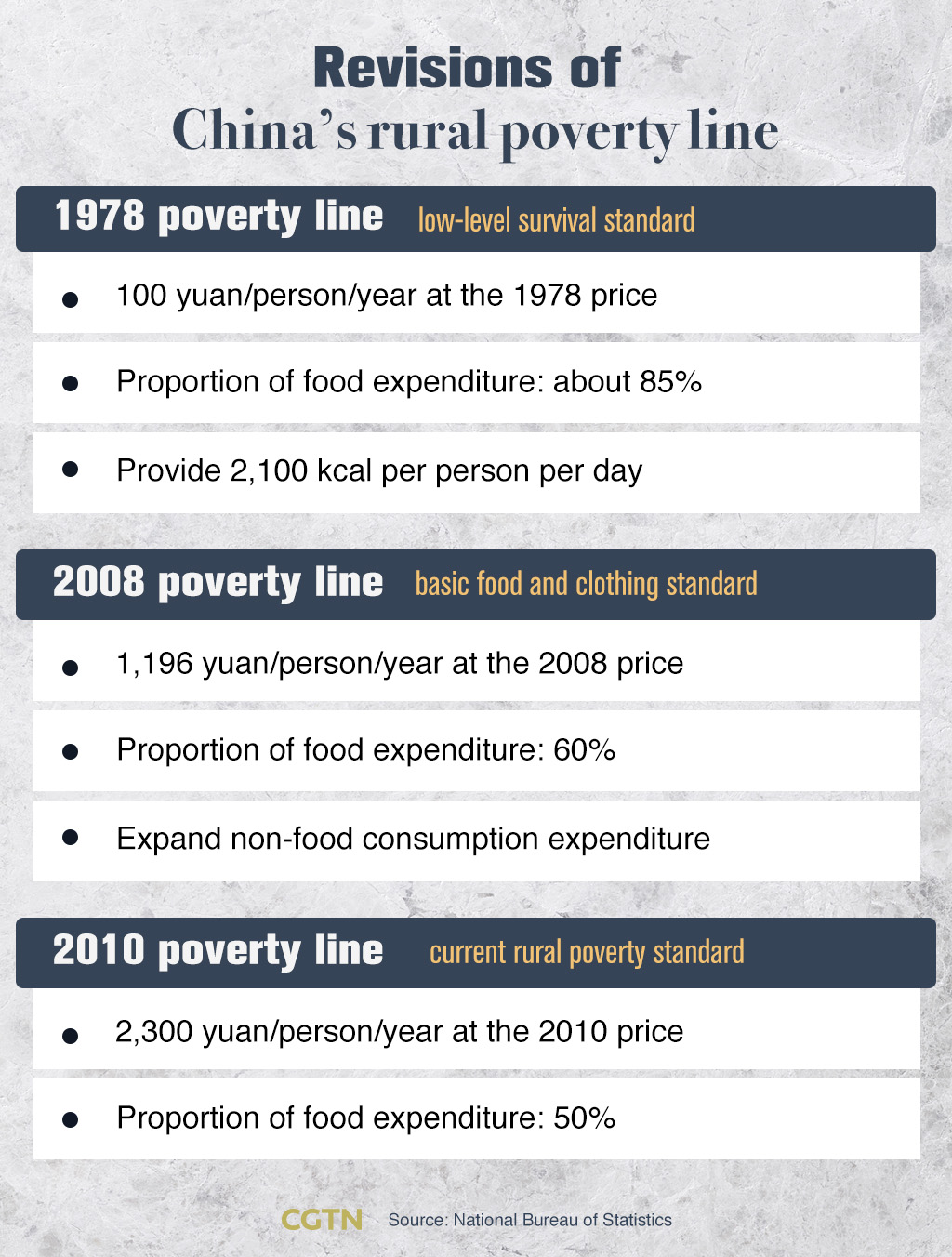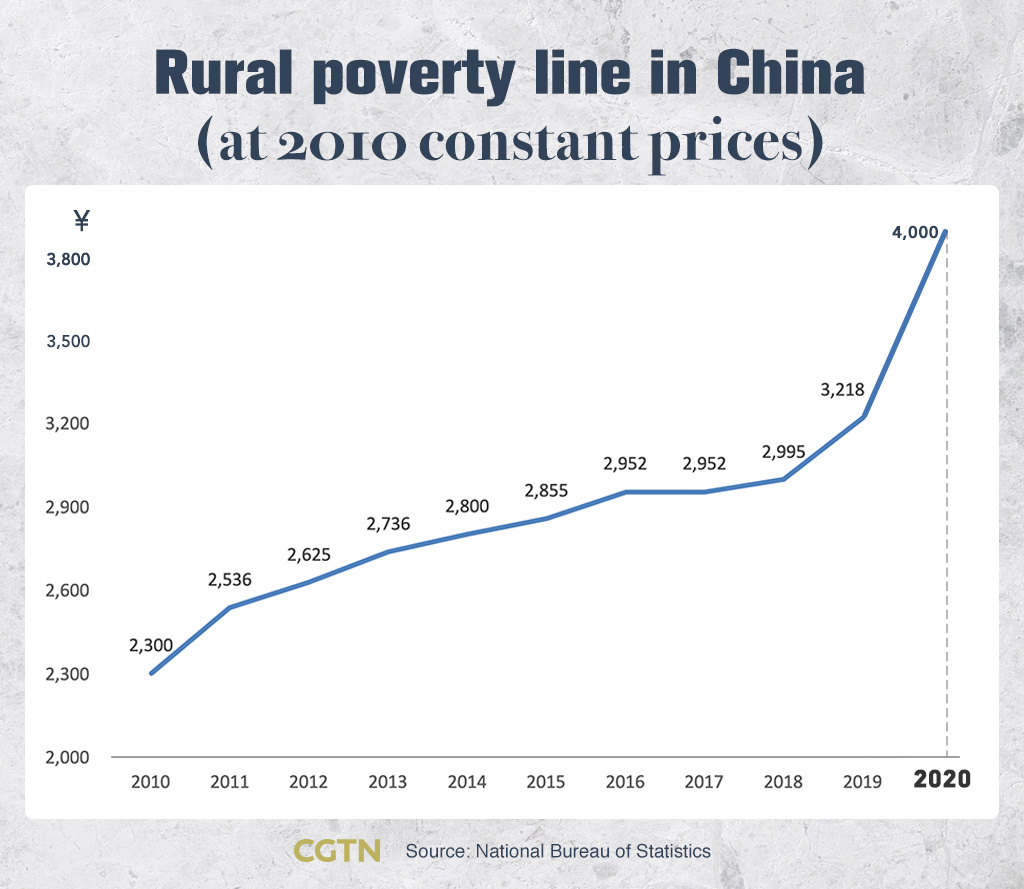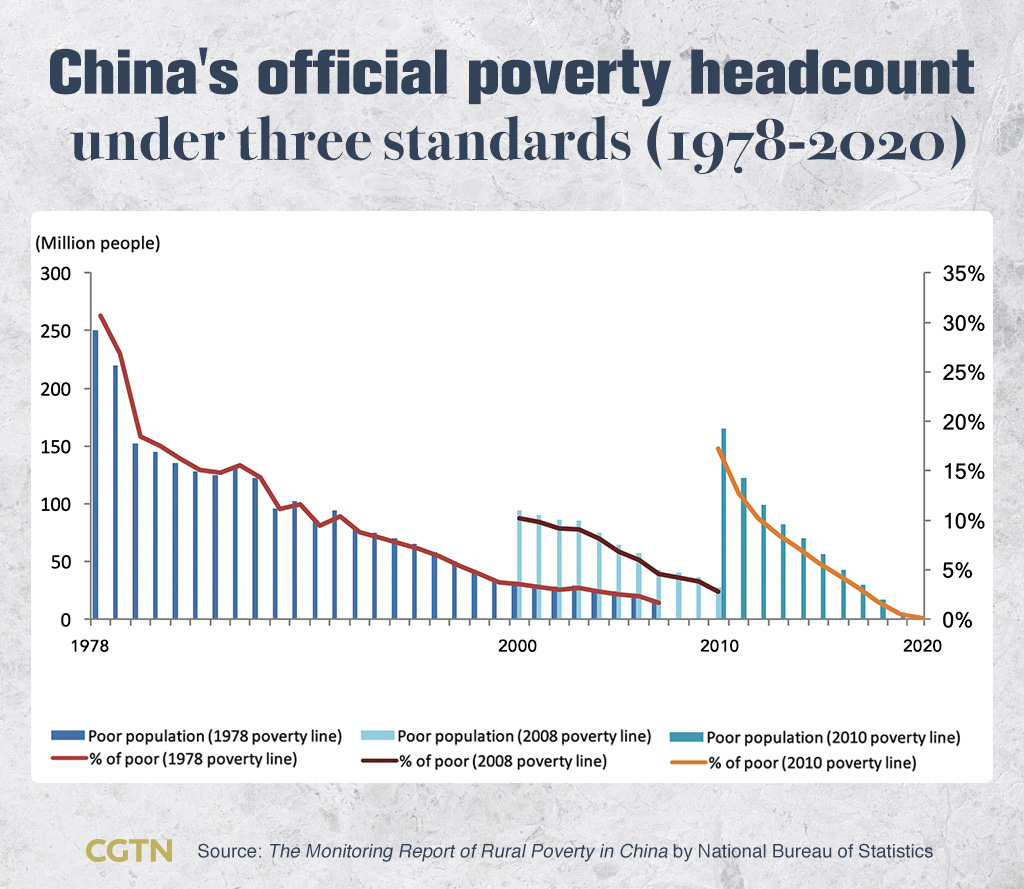Chinese President Xi Jinping marked China's eradication of extreme poverty at a gathering in Beijing on Thursday.

A view of Shibadong Village in Hunan Province, central China. /CFP
The country managed to lift about 100 million impoverished people out of extreme poverty since 2012.
"China has achieved the poverty eradication target set by the UN 2030 Agenda for Sustainable Development 10 years in advance," said Xi.
Despite this achievement, there are those that remain skeptical of the country's absolute poverty eradication work, arguing that China shifted the goalpost even far below the international standard for extreme poverty.
The World Bank defines "extreme poverty" as living on less than $1.90 per person per day, according to a new standard adopted in October 2015.
What is China's extreme poverty line?
In different historical periods, China has adopted three poverty standards in 1978, 2008, and 2010, respectively, since reform and opening-up began in the late 1970s.

In 2010, China set its new poverty line at 2,300 yuan per person per year, about 6.30 yuan per person per day, or about $0.94.
With about a $1 difference between $0.94 and the World Bank's line of $1.90, some have drawn the conclusion that China set the bar too low. This logic seems natural, but it is inaccurate.
In order to make a fair comparison, purchasing power parity (PPP), which compares different countries' currencies through a basket of goods, needs to be taken into account.
Additionally, using 2010 as a base, China adjusts its poverty line every year to reflect the inflationary pressure faced by the rural population, which is to say the poverty line is not a static number of 2,300 yuan.

It is important to note that China and the World Bank set their standards using prices in different years: 2010 and 2011, respectively.
Using 2011 as a base point, China's rural poverty was pegged at 2,536 yuan per person per year, or 6.95 yuan per day. According to the 2011 PPP, $1 in 2011 was equivalent to 3.04 yuan, which means China's rural poverty line is actually equivalent to a daily income of approximately $2.30 – about 20 percent higher than the global standard of $1.90.

More than $2.30
In fact, China's poverty alleviation standard is higher than the international benchmark not only because of the poverty line.
China's poverty aid package goes beyond using daily income as a barometer, it also aims to meet the food and clothing needs of the rural poor population and guarantee they have access to compulsory education, basic medical services, and safe housing, which is referred to as the "Two Assurances and Three Guarantees."
"It is a basic requirement and core indicator in our poverty eradication effort that by 2020 we will succeed in delivering the 'Two Assurances and Three Guarantees,'" Xi mentioned this many times during conferences and conversations with local officials during his inspections.
If the benefits of the "Two Assurances and Three Guarantees" for the impoverished are converted into input income, the actual poverty standard is at least 20 percent higher than the current standard of $2.30, wrote a joint report by Ye Xingqing and Yin Haodong, experts focusing on rural economy at the Development Research Center of the State Council.
Graphics by Li Jingjie


